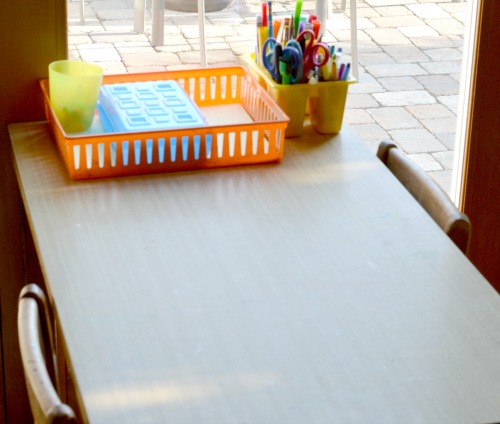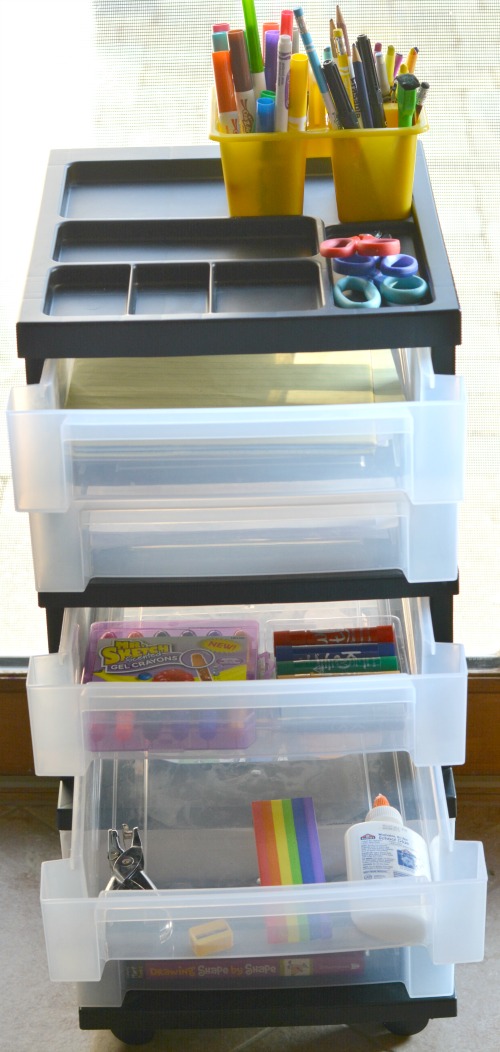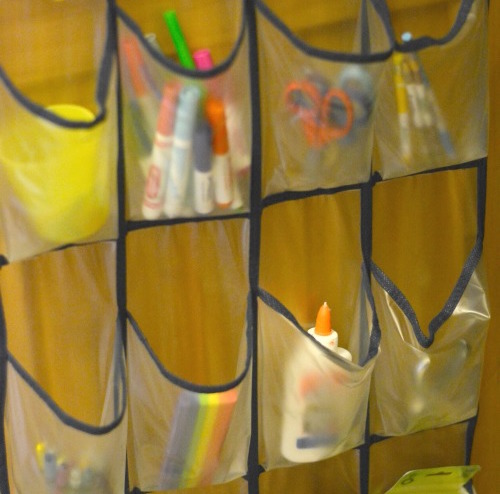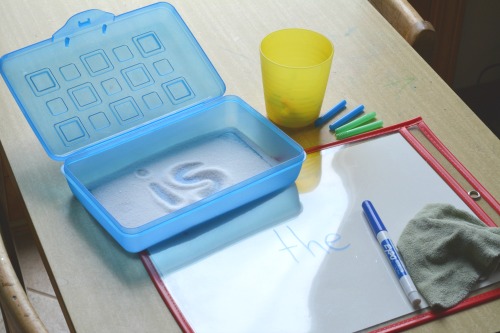The few hours between school dismissal and bedtime are often filled with various responsibilities. Dinner, sports or music practice, bathtime and...HOMEWORK. Yes, many of our children have an evening assignment to complete. But we can make this task easier by fostering an environment that is conducive to learning.
To help your child get schoolwork done comfortably and efficiently, set up a homework station in your home. Whether you have the room to make a dedicated space or you need a space-saving strategy, here are three ideas to try.

1. Stand-Alone Desk or Table Station
When creating a dedicated space for homework, I think about how my kids learn and work best. Some kids need a quiet, low-interruption environment to work. So, a bedroom desk might be a good spot. Other kids thrive in an area where they can get help from you or they prefer the hum of the household in the background. The kitchen or dining table might be a good location for these types of learners.
Dedicate a desk or table as your child's homework station. A simple basket or tray can hold materials such as markers, pens and pencils, scissors, and other supplies.

2. Roll-Out Station
A rolling cart makes a great portable homework station. If you are limited on space, you can even roll it into a closet when it's not needed. When it is time to do homework, simply roll it to the work spot such as the kitchen table or the living room floor. This method works well for children who like to work in different areas depending on their mood.
I prefer a rolling cart that has six to eight drawers. Each drawer can house different supplies that your child will need to complete their homework. Our cart has drawers for paper, writing utensils, tape and glue, hands-on materials (magnetic letters, counters, etc.), a dry erase board with markers, and extra supplies.

3. Hanging Door Station
If you are super tight on space, a hanging door station is the answer. Purchase a plastic hanging shoe rack — preferably one with see-through pouches — and attach it inside of a closet door or behind your child's bedroom door.
Next, fill each pouch with a different supply your child might need for homework. There are so many pockets that you can also store art, office supplies, and small toys.
Stocking Up Tips for Younger Children

Inexpensive household materials (along with a few school supplies) can become great practice resources for your child to get hands-on learning practice while completing their homework. Here are a few ideas to try:
- A small tray or plastic pencil box filled with a thin layer of salt becomes a sensory tool for writing spelling or sight words.
- Plastic or paper straws cut into pieces become counters for simple addition and subtraction problems.
- A laminated piece of paper, plastic sleeve, or even a plastic disposable plate becomes an instant dry erase board.
Creating a dynamic homework station for your child now, along with daily routines and useful habits, will help set the stage for a successful and efficient school year. Also, don't miss this Back-to-School Survival Guide for more great resources and suggestions.
Connect with Jodie Rodriguez at her site Growing Book by Book.


